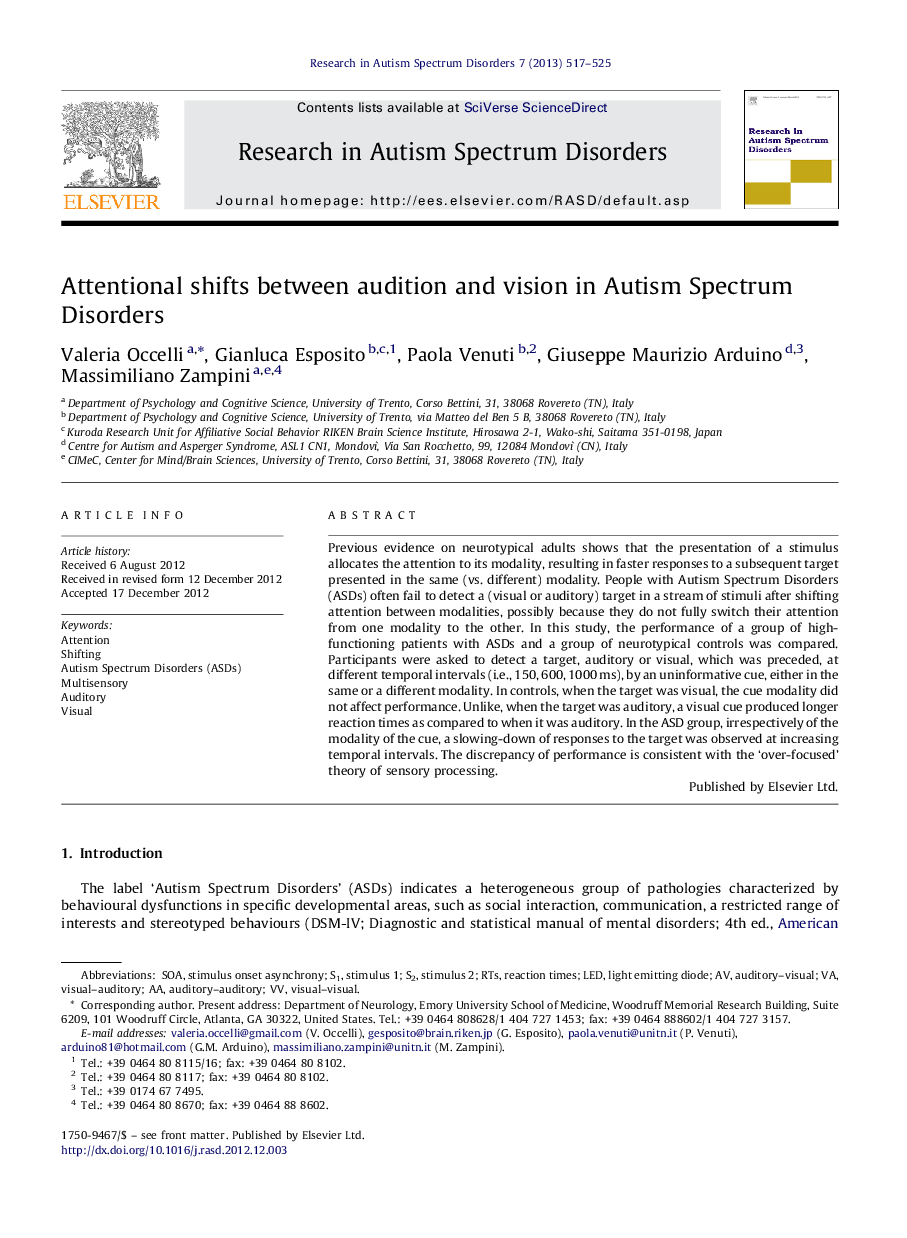| Article ID | Journal | Published Year | Pages | File Type |
|---|---|---|---|---|
| 370467 | Research in Autism Spectrum Disorders | 2013 | 9 Pages |
Previous evidence on neurotypical adults shows that the presentation of a stimulus allocates the attention to its modality, resulting in faster responses to a subsequent target presented in the same (vs. different) modality. People with Autism Spectrum Disorders (ASDs) often fail to detect a (visual or auditory) target in a stream of stimuli after shifting attention between modalities, possibly because they do not fully switch their attention from one modality to the other. In this study, the performance of a group of high-functioning patients with ASDs and a group of neurotypical controls was compared. Participants were asked to detect a target, auditory or visual, which was preceded, at different temporal intervals (i.e., 150, 600, 1000 ms), by an uninformative cue, either in the same or a different modality. In controls, when the target was visual, the cue modality did not affect performance. Unlike, when the target was auditory, a visual cue produced longer reaction times as compared to when it was auditory. In the ASD group, irrespectively of the modality of the cue, a slowing-down of responses to the target was observed at increasing temporal intervals. The discrepancy of performance is consistent with the ‘over-focused’ theory of sensory processing.
► Faster responses when a target is leaded by an ipsimodal cue by 150 or 600 ms. ► At SOA of 1000 ms, this effect is reduced for auditory targets in the ASD group. ► At SOA of 1000 ms, this effect is reversed for visual targets in the ASD group. ► The ASD group is unable to maintain the attentional focus across the 1000 ms SOA. ► The ASD group tends to over-focus the attentional resources on each discrete input.
